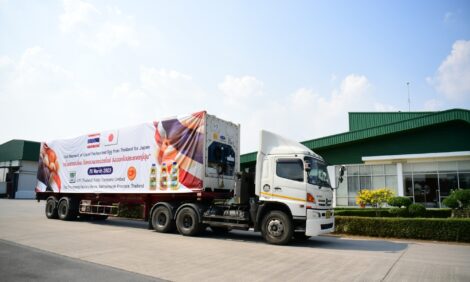



Packaging with Smart Functions
NORWAY - Researchers believe that the packaging of the future will contain substances that will get rid of unwanted bacteria. Or it could be made from food waste.Fat, vitamins and pigments in food are broken down to a greater or lesser extent by oxygen, temperature and light. Some foods cannot tolerate oxygen, while others thrive on it. Foods must be packaged differently because they decompose differently. Many vegetables need oxygen to maintain their quality, for example, and dairy products must be protected from light.
The food packaging researchers at the Nofima food research institute have many issues to work on in this area. The institute has its own food packaging programme, which is supported by the Foundation for Research Levy on Agricultural Products (FFL).
Biological packaging
Biopackaging is a new and growing research area. Every year, households produce huge quantities of food waste. Much of this could be recycled into packaging.
"Today, biomaterials are mainly used for fruit, vegetables and dry food products (apart from fibre-based materials such as cardboard). Our goal should be to use more food waste for packaging. There is a huge potential here, but also many challenges," says research scientist Marit Kvalvåg Pettersen, who is heading the programme at Nofima.
Salmon in biomaterial with mixed success
The researchers are constantly testing biomaterials to find out if they can replace the traditional plastic.
"The greatest challenge is that biomaterials often have poor damp barriers, which in turn can affect the oxygen barrier. We recently tested the packing of salmon and chicken in starch-based packaging. The results show that the food products had a better colour towards the end of storage compared with the traditional materials, but they dried out. The reason is that the biomaterial absorbs moisture," says Mr Pettersen.
The Norwegian food industry is sitting on the fence and waiting. A great deal of research and innovation is needed to gain success with more types of packaging. Major changes will also be needed in waste handling, with separate recycling containers for bioplastic and labelling so that the consumer can see the difference.
Cinnamon as a bactericide
In a country like Norway where there are great distances to be covered, a long shelf life is important and is a priority area for the packaging researchers. One way of preventing the growth of bacteria is to use cinnamon, oregano or lemon on meat products.
"Some substances contain compounds that prevent bacteria from growing quickly. These antimicrobial substances can be spread on the packaging or mixed into the plastic material before it is remoulded into the correct shape. In or on the packaging, these substances make themselves useful by breaking down or preventing the growth of the unwanted bacteria. We have tested a selection of potential antimicrobial substances that are extracted from cinnamon or oregano, for example, and used in the packaging," explains Mr Pettersen.
Chicken in bactericidal packaging
In a recent trial, the researchers tested antimicrobial substances from cinnamon on the plastic packaging of chicken.
"Compared with packaging without these agents, the antimicrobial substances helped to reduce the speed of bacterial growth at the start of the storage period. This is a good basis for further work on similar packaging solutions," says Mr Pettersen.
New equipment makes the research more usable
In autumn 2011, the research institute installed a new packing machine that makes this research even more relevant for the food industry. Using it, the researchers can offer more flexibility in terms of packing method, gas packaging and choice of material.
The packaging research is a strategic institute programme at Nofima during the period 2009 to 2012. There is a Ph.D. student attached to the programme.








